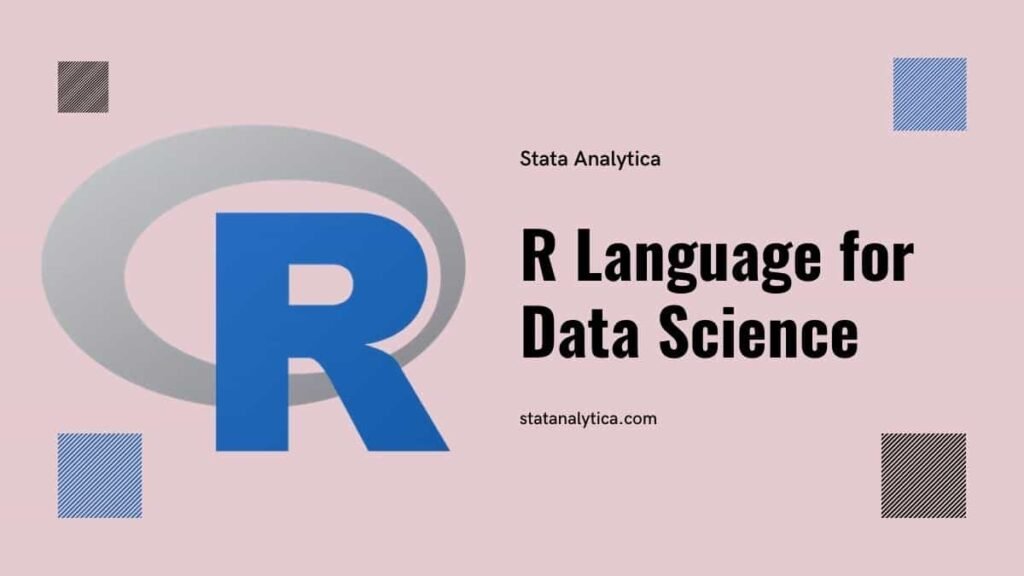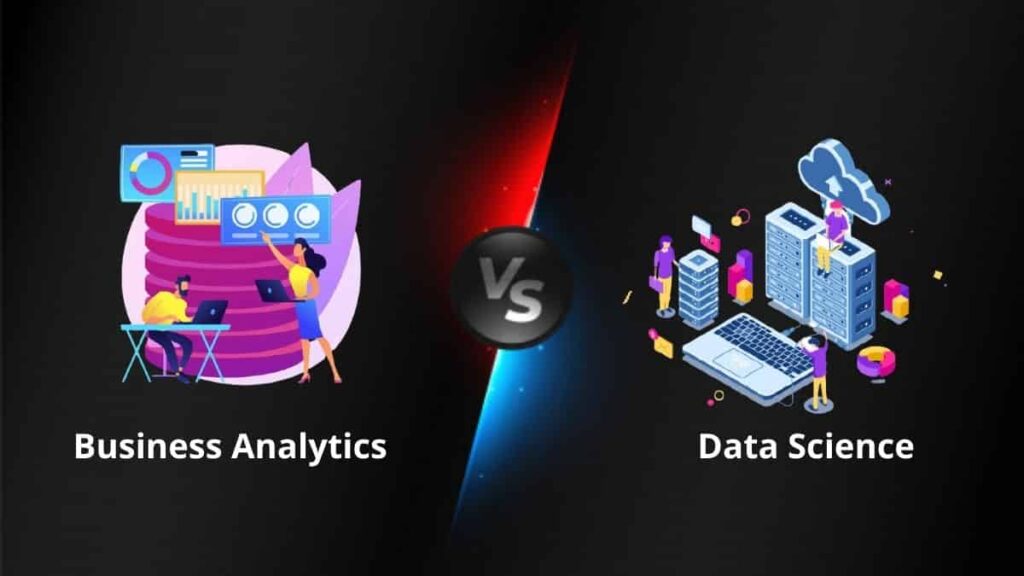R is becoming on of the most popular language in the world. Due to the increasing need for big data. R comes into the popularity index among students. Basically, R is used for statistical computations, data analysis and Graphical representation of data. R is facing huge competition from Python. Python for Data Science is one of the valuable skills needed for a data science career. R language for Data Science with the emergence of Data Science. As it has several tools to perform statistical computation, data analysis, data processing, data transferring, and so on.
Data Science
Table of Contents
Data Science is a multifaceted field that uses different scientific tools, methods, processes, systems, and algorithms to extract deep understanding and knowledge from both structured and unstructured data. It is primarily related to big data, data mining, and deep learning.
What is R Programming
It is a free software language formulated for statistical computing and graphic purposes. It offers a number of statistical and graphical methods which makes it fully endearing to data analysts, statisticians, and researchers. R is a preferred language for statistical analysis amongst academicians, governments and industries because the language has a booming open-source package that is constantly being updated, ensuring that users are always equipped with the latest tools and techniques.
History of R Language
R is an open-source language that was developed in 1990 by Ross Ihaka and Robert Gentleman, who worked at the University of Auckland, New Zealand. The ‘R’ name is derived from the initials of both of their names.S programming language is another language used in statistical analysis but this was developed as a free substitute. R has progressed much in the recent past. With contributions from thousands of developers globally, there is now called Comprehensive R Archive Network (CRAN), which has thousands of R packages.
Using R Language for Data Science
Data Science has become a takeaway field in today’s world, which is why the need to analyze and construct insights from data has emerged. Thus, the R language provides a rigorous environment for processing data and drawing interpretations. R contains several branches, such as astronomy and biology. At present, R is used for both academic and industrial purposes.
R is an advanced language used in Data Science. It can perform complex statistical computations, as well as operations on arrays, vectors, matrices, and other data structures. Since it displays the data through graphical representation, it makes the data intractable for users.
The foremost part of Data Science is data extraction, and R allows interface R code with its database management system. Moreover, R consists of ample options for advanced data analytics, namely, machine learning, algorithms, etc. It also has many packages for performing image processing.
Data Wrangling
Data wrangling is the process of structuring unstructured data for further analysis. This process takes a lot of time in data science, and the data is collected from various sources.
Therefore, each source presents the data in its own way. Manipulating the data becomes difficult and takes a lot of time. But the data wrangling process becomes easier with the use of the R language.
Data wrangling is a time-consuming process of cleaning composite and messy data sets for easy access and construction. Since it is a very prominent and time-consuming process in data science, R plays a key role in performing Data Wrangling speedily and easily, as R has an intensive library of tools for manipulating and wrangling data sets.
Here the the reason why it is easy to manipulate and wrangle data using. The following tools in R make this process easy:-
- Deplyr
- data.table Package
- readr Package
Data Visualization
Data visualization is the process of visualizing data in graphical form. This helps in analyzing unorganized data from angles that are not clear. R comes with a large number of tools for data visualization, analysis, and representation.
When data is represented in graphical form, it is much easier to analyze it from different perspectives. R programming consists of several tools for data visualization, analysis, and representation. GGPLOT2 and GGEDIT are the most important standard plotting packages in R. GGPLOT2 performs data visualization, and GGEDIT fills the gap between making a plot and getting the entire trouble-making plot correct.
Specificity
R is not as common as other programming languages. It is specially designed for statistical analysis and data reconfiguration. The library of R is designed to make data analysis easier, more detailed and approachable.
R libraries enable all new statistical methods, making R the perfect choice for data analysis and projection.
The best part of R language is that it holds a large community where every aspirant helps each other to solve complex problems with R language.
The main objective of R libraries is to make data analysis easier, more perspective, and enhanced. Since all the new statistical methods are first enabled upon R libraries that is why it is always preferred for Data science, all the members of the R community are always active, knowledgeable, and highly supportive that’s why it has emerged as the first choice of data science projects.
Machine Learning
Data science is all about prediction. That is why data scientists need to build an algorithm that can make predictions. For this, R provides developers with many tools to train and evaluate an algorithm and predict future events.
In data science, analysts may be required to train algorithms, automate them accordingly and make future predictions. R helps programmers use ample tools to train and develop algorithms and make future predictions. Thus, R makes it easy for Data Scientists to learn a branch of data science (machine learning ).
- MICE
- rpart & PARTY
- CARET
- randomFOREST
Availability
R is an open-source programming language. Therefore, it is free to use and implement in a data science project. It is a better and cheaper option for developing large projects.
There are many free resources available online for R languages. Any beginner can learn R programming language with the help of R community members.
Even a company can hire an R developer through the community, which makes it a cost-effective data science programming language.
Accessibility
R language is open-source, so anyone can use this programming for data science easily. Thus it is a very cost-effective and efficient tool to perform data analysis and data disfiguration irrespective of the size of the project. Since it is easily accessible by everyone at minimal charges therefore it has emerged as the perfect choice to begin learning the R language for Data Science.
Open Source and Free to Use
R is an open-source language in the sense that the program can be obtained for free, as can the user’s right to alter it and distribute it. This is beneficial for development, though it gives the language a setting where users can contribute to such development.
The fact that learners do not pay for licenses is still very low, making this a profession anyone can get into. Thus, students can apply R with no money at all, and organizations – use the same tool across departments, investing nothing more than their time.
Integration with Other Tools
Listing two shows how R’s integration with other languages and tools expands its use in the data analysis universe. In this regard, it was easy to interface with Python, as users were able to get the best of both languages.
For instance, although designers can use R for stats analysis, they can employ Python to solve the data patronage and machine learning issues and hence create the best technique for information science.
Code without complier
Since R is an interpreted language, anyone can learn it for free and run code without complier. R draws, analyzes, and develops the code easily and promptly.
Statistical calculations without Vectors
R is a vector language in which anyone can add functions to a single vector without putting them in a loop. That is why R is very strong and prompt compared to other languages.
Trendy
Since the R language is easy to access for free, everyone has started to learn R programming. Thus, it has become prevalent in both academia and industries with the emergence of Data Science.
Web Application
With the help of R, one can build aesthetic web applications, and by using the R shiny Package, one can build interactive dashboards directly from the console of R IDE.
Conclusion
The programming language R has also developed and emerged with the rapid growth of data science. Data science is a branch whereby numerous statistical tools and methods are used for data analysis and data interpretation, which is why R is widely used in it.
Because R is easy to access for free, it is machine learning, and there are several reasons, as discussed above, to use R in Data Science. Thus, we can conclude that in today’s world, Data Science and R programming go hand in hand. This is beneficial for both the company and the developer. If you have a question about who “does my R homework,” then you are in the right place. Our R programming help provides the best services.


